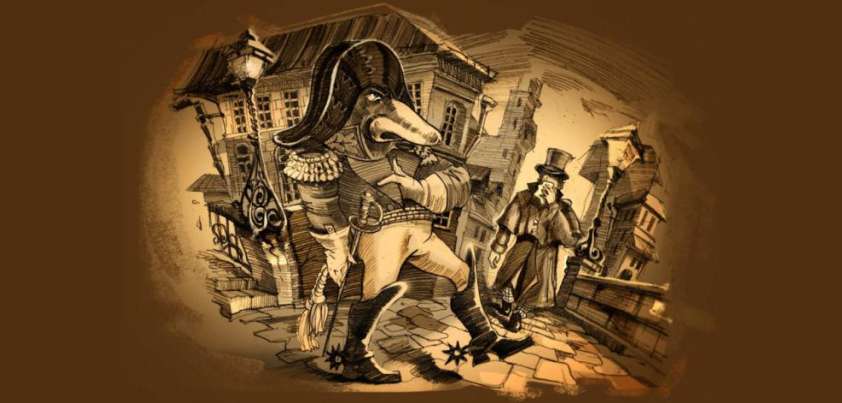 Doris Lessing’s story about a British farming family in post-World War 2 Africa contrasts the richness and beauty of the land with the destructive power of nature. The major theme is survival: for the locust swarm, through instinct and sheer weight of numbers; for the farmers, through planning, preparation, manpower and, when these fail, being prepared to start over. Other themes: helplessness, devastation, the ongoing cycles of struggle against nature, perseverance. The message of the story lies in the many references to being finished/ruined. This is never certain unless one gives up hope and stops fighting to survive. More…
Doris Lessing’s story about a British farming family in post-World War 2 Africa contrasts the richness and beauty of the land with the destructive power of nature. The major theme is survival: for the locust swarm, through instinct and sheer weight of numbers; for the farmers, through planning, preparation, manpower and, when these fail, being prepared to start over. Other themes: helplessness, devastation, the ongoing cycles of struggle against nature, perseverance. The message of the story lies in the many references to being finished/ruined. This is never certain unless one gives up hope and stops fighting to survive. More…
The Nose
 Nikolai Gogol was a pioneer in absurdist fiction, writing this story almost eighty years before Franz Kafka’s iconic Metamorphosis. Gogol’s absurdism served an important purpose: social criticism. The Nose is a comical account of “Major” Platon Kovaloff, a vain, pompous and narcissistic municipal official who goes looking for his wandering proboscis. Kovaloff is so obsessed with improving and capitalizing on his social position that he feels emasculated without it. The story satirizes three aspects of Russian society: 1) the corrupt government bureaucracy; 2) its fixation on superficial signs of importance; and 3) how different social classes view and treat women. More…
Nikolai Gogol was a pioneer in absurdist fiction, writing this story almost eighty years before Franz Kafka’s iconic Metamorphosis. Gogol’s absurdism served an important purpose: social criticism. The Nose is a comical account of “Major” Platon Kovaloff, a vain, pompous and narcissistic municipal official who goes looking for his wandering proboscis. Kovaloff is so obsessed with improving and capitalizing on his social position that he feels emasculated without it. The story satirizes three aspects of Russian society: 1) the corrupt government bureaucracy; 2) its fixation on superficial signs of importance; and 3) how different social classes view and treat women. More…
A Guide to Berlin
 This early story by Vladimir Nabokov is not about places to see in Berlin, but rather the narrator’s observations of some everyday aspects of city life. Through a series of vignettes he describes pipes left on the footpath, the streetcar system, people he sees working on the streets, the city zoo and the pub in which he is drinking with a friend. The major theme is the relationship between time and memory: how some things we experience today will become “future recollections”, and the artist’s duty to record his/her experiences in detail for the benefit of future generations. More…
This early story by Vladimir Nabokov is not about places to see in Berlin, but rather the narrator’s observations of some everyday aspects of city life. Through a series of vignettes he describes pipes left on the footpath, the streetcar system, people he sees working on the streets, the city zoo and the pub in which he is drinking with a friend. The major theme is the relationship between time and memory: how some things we experience today will become “future recollections”, and the artist’s duty to record his/her experiences in detail for the benefit of future generations. More…
Servant Girl
 In this story by Estrella Alfon, a hard working Filipino servant girl works for a mistress who is a heavy drinker and often verbally and physically abusive. She rejects a local man who says he loves her, and is infatuated with an “angelic” cochero who once helped her after a fall. After a particularly brutal beating, she runs away to look for the cochero, who she fantasizes is in love with her. She finds him, but he doesn’t remember her. Seeing things more clearly, she returns home. Themes include social class, innocence, workplace abuse, humiliation, perseverance, fantasy, violence, enlightenment. More…
In this story by Estrella Alfon, a hard working Filipino servant girl works for a mistress who is a heavy drinker and often verbally and physically abusive. She rejects a local man who says he loves her, and is infatuated with an “angelic” cochero who once helped her after a fall. After a particularly brutal beating, she runs away to look for the cochero, who she fantasizes is in love with her. She finds him, but he doesn’t remember her. Seeing things more clearly, she returns home. Themes include social class, innocence, workplace abuse, humiliation, perseverance, fantasy, violence, enlightenment. More…
A Retrieved Reformation
 In this story from William porter (aka O. Henry), safe-cracker Jimmy Valentine gives up his life of crime for love. He changes his identity, builds a successful business, and becomes a model citizen. Unfortunately, police detective Ben Price is hot on Jimmy’s trail. The title reflects Price’s decision to let Jimmy “retrieve” his “reformed” life after witnessing him risk it all to save a child. Themes: love, reform, redemption and identity. Love succeeds in reforming Jimmy where the justice system had failed. Redemption comes with Jimmy’s potential sacrifice. A possible moral: there is a Ralph Spenser (good side) in everyone. More…
In this story from William porter (aka O. Henry), safe-cracker Jimmy Valentine gives up his life of crime for love. He changes his identity, builds a successful business, and becomes a model citizen. Unfortunately, police detective Ben Price is hot on Jimmy’s trail. The title reflects Price’s decision to let Jimmy “retrieve” his “reformed” life after witnessing him risk it all to save a child. Themes: love, reform, redemption and identity. Love succeeds in reforming Jimmy where the justice system had failed. Redemption comes with Jimmy’s potential sacrifice. A possible moral: there is a Ralph Spenser (good side) in everyone. More…